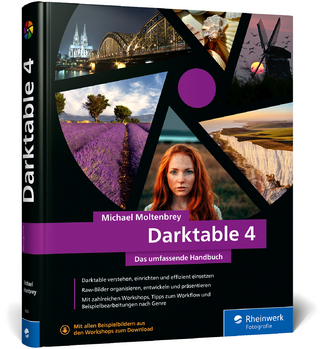
Automatic Generation of Morphological Set Recognition Algorithms
Springer-Verlag New York Inc.
978-0-387-97049-3 (ISBN)
- Titel ist leider vergriffen;
keine Neuauflage - Artikel merken
On the surface it may appear that the problem solved by the system is not very interesting, however, the contribution ofVogt' s work should not be judged by the images that the system can segment. Its real contribution is in demonstrat- ing, possibly for'the frrst time, that automatic programming is possible in computer vision systems. The selection of morphological operators demonstrates that to implement an automatic programming-based approach, operators whose behavior is clearly defined in the image space are required.
1 Introduction.- 1.1 Problem Definition and Characterization.- 1.2 Mathematical Morphology.- 1.3 Related Work.- 1.4 Goals and Objectives.- 1.5 Organization of the Book.- 2 Review of Mathematical Morphology.- 2.1 Types of Image Data.- 2.2 Images as Sets in Space.- 2.3 Operation Classes and Properties.- 2.4 Criteria.- 2.5 Set Operations.- 2.6 Positional Masking and Thresholding Operations.- 2.7 Translation-Based Morphology Operations.- 2.8 Structuring Element Decomposition.- 2.9 Common Structuring Elements.- 2.10 Erosions and Dilations.- 2.11 Openings and Closings.- 2.12 Residues.- 2.13 Band Operations.- 2.14 Particle and Hole Operations.- 2.15 Grey Level Operations.- 2.16 Summary of Problem Domain.- 3 Theory of Automatic Set Recognition.- 3.1 Basic Terminology.- 3.2 Example Problems.- 3.3 Formal Description of Problems.- 3.4 Algorithms as Graphs.- 3.5 The Algorithm Development Process.- 3.6 Search Strategies and Completeness.- 4 REM System Implementation.- 4.1 Representation of Algorithms.- 4.1.1 Machine Level-C4PL Language.- 4.1.2 Lisp Executable Level-MM Language.- 4.1.3 Algebraic Level-IA Language.- 4.1.4 Target Level-IC Language.- 4.1.5 Operation Database.- 4.1.6 Algorithm Representation Summary.- 4.2 Overview of System Design.- 4.2.1 Program Components.- 4.2.2 Data Structures.- 4.2.3 Activity.- 4.3 Search Management.- 4.4 Problem Solving.- 4.4.1 Subproblem Instantiation.- 4.4.2 Subproblem Evaluation.- 4.4.3 Operator Testing and Proposal.- 4.4.4 Data Collection.- 4.4.5 Data Analysis and Solution Generation.- 4.4.6 Selection and Dispatching of Solutions.- 4.5 System Output.- 5 Results.- 5.1 Summary of System Capabilities.- 5.2 Examples of Problems Solved by REM.- 5.3 Example Program Run.- 6 Conclusion.- 6.1 Primary Accomplishments.- 6.2 Summary and Discussion.- 6.3 Future Directions.- A Partial List of Example Problems Solved by REM.- B Algebraic Definitions of IC Band Operations.- C Terminal Output for Example Problem 'TCODSK_RT'.- D Band Operators Defined in the IC Target Language.- E Selected Bibliography.
| Reihe/Serie | Springer Series in Perception Engineering |
|---|---|
| Zusatzinfo | biography |
| Verlagsort | New York, NY |
| Sprache | englisch |
| Gewicht | 590 g |
| Themenwelt | Informatik ► Grafik / Design ► Digitale Bildverarbeitung |
| Informatik ► Theorie / Studium ► Künstliche Intelligenz / Robotik | |
| Technik ► Elektrotechnik / Energietechnik | |
| ISBN-10 | 0-387-97049-5 / 0387970495 |
| ISBN-13 | 978-0-387-97049-3 / 9780387970493 |
| Zustand | Neuware |
| Haben Sie eine Frage zum Produkt? |
aus dem Bereich


